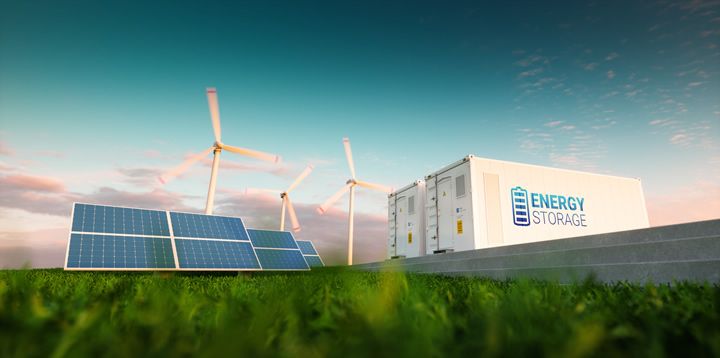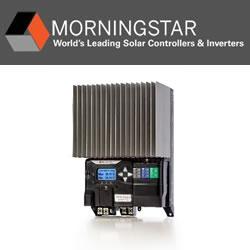Storion has focused on securing access to a unique vanadium leasing model. Because the vanadium electrolyte represents 40-60% of a VRFB system’s cost, it is a clear, leading candidate for cost reduction.
 Vanadium Redox Flow Batteries
Vanadium Redox Flow Batteries

Q&A with Travis Torrey, Chief Technology Officer | Storion Energy
Who is Storion Energy?
Storion Energy is a joint venture between a Stryten Energy affiliate and Largo Clean Energy Corp., a subsidiary of Largo Inc., one of the world’s largest and highest quality vanadium suppliers. The new company’s mission is to remove the barriers to entry for battery manufacturers to domestically sourced, price-competitive components for the flow battery industry, including vanadium electrolyte. Supported by a Phase 2 award from the U.S. Department of Energy (DOE) through the MAKE IT Prize Facilities track, Storion is already racing forward to rapidly scale production of the electrolyte used in vanadium redox flow batteries (VRFB) for long-duration energy storage (LDES) applications in the U.S. Storion utilizes the Earth to Energy™ model, which combines access to high-quality vanadium supply from the only western hemisphere vanadium mine with domestic electrolyte production to establish a fully integrated vertical supply chain for utility-scale flow battery LDES solutions. Storion will leverage its proprietary continuous process and patented purification process to offer high-quality, domestically sourced electrolyte to support the DOE’s goal to deliver reliable energy at $0.05/kWh by 2030. In addition, in partnership with Largo Physical Vanadium Corp.’s exchange trade funds, Storion offers a unique vanadium electrolyte leasing model that can help VRFB effectively compete with the up-front capital costs of lithium-ion battery energy storage systems.
Why components and not batteries?
Over the last ten years, several flow battery companies have emerged and continue to form to serve the LDES market. Alongside the battery OEMs, a strong supply chain and manufacturing capabilities have developed in Europe and Asia. However, a gap remains in the domestic expertise and infrastructure to grow the U.S. market. Especially given the extensive shipping costs and strong reliance on foreign entities of concern, it is imperative to resolve this situation with a critical need for vanadium electrolyte at the forefront. Storion Energy is building on an experienced leadership team with a unique core competency to be able to solve supplying electrolyte at the kind of scale that's necessary for this industry. There is a saying “the rising tide lifts all boats.” We believe that manufacturing infrastructure is the rising tide that can allow flow batteries to be successful.
How does the vanadium electrolyte leasing model work?
The upfront capital cost of VRFB systems poses a significant challenge to widespread adoption. According to Susan Babinec, Program Lead of Stationary Storage at Argonne National Laboratory, “Vanadium works today. If vanadium was super low cost and it had a stable price, we could all go home. (T)he fact is it's not stable so what’s why people look to other chemistries.”
Recognizing this challenge and opportunity, Storion has focused on securing access to a unique vanadium leasing model. Because the vanadium electrolyte represents 40-60% of a VRFB system’s cost, it is a clear, leading candidate for cost reduction. Fortunately, the vanadium electrolyte is easily recycled at the end of the VRFB lifetime, and the vanadium can either be reused in a new battery or recycled for use in adjacent markets.
Further, vanadium, like other precious and critical metals, retains its value over time, and investors are happy to trade on the future value of vanadium, storing their assets in a battery rather than physically holding the material. The VRFB owner then avoids the high cost of purchasing the vanadium, benefiting from access to the vanadium with only a nominal upfront investment to convert it into electrolyte and a small annual fee to ensure safekeeping. There is no other battery technology that would allow you to leverage the long-term valuation of the base product to minimize your initial cost of the system. Storion’s vanadium electrolyte leasing model enables the proven VRFB technology at a stable price.
What makes Storion different from the other VRFB companies that have failed?
By focusing on component supply, Storion Energy becomes an industry enabler for other VRFB companies and the broader flow battery markets for alternate chemistries. Initially, we plan to offer the key component in demand by the other market players – vanadium electrolyte. In emerging technologies, you tend to have a highly variable supply chain. It’s hard to get parts, much less good parts. Storion Energy will create excellence and a strong foundation with these two key components, allowing the battery manufacturers to achieve commercialization.
Are vanadium redox flow batteries a better LDES solution than lithium?
Battery energy storage systems (BESS) in a variety of battery chemistries will be needed to meet the increasing demand for power. The duration and scale of the application should determine the choice of battery technology. Long-duration energy storage is an application where you need a lot of energy over a long period of time, and there are highly variable customer requirements. Some customers need four hours, some need eight hours, and some want the capability to expand their energy later or increase their power output later.
VRFB systems are ideally suited to this application because power and energy are decoupled. The simple analogy of that concept is the power of the motor in your car and the gas tank that supplies it. The gas tank determines how far you can go, and the size of the engine determines how quickly you can get there. With a lithium BESS, power and energy are tied together. If you want to increase one, you have to increase the other. With a vanadium redox battery, you can separate them. If you want low power, but you want it for a long time, you design your battery that way, and you only pay for what you need. If you want the reverse of that, you can do that as well.
With a stable lifespan of 20-30 years, easy recyclability, and an emerging domestic supply chain, VRFBs will be the long-term solution to store massive amounts of energy generation to ensure energy resiliency and independence in the United States.
Will VRFBs ever hit the DOE goal of $0.05/kWh levelized cost of storage (LCOS)?
 The DOE set a very ambitious goal in establishing the $0.05/kWh LCOS target. Through its proprietary electrolyte production and patented purification processes, supply chain efficiencies, novel leasing models and IRA tax credits, Storion is poised to dramatically reduce the cost of the vanadium electrolyte, which is a primary input to the LCOS. Combined with a projected rapid expansion of VRFB market opportunities in the near future, OEMs should realize substantial improvements in their own cost efficiency for the dry systems. While the $0.05/kWh LCOS target is ambitious, these two developments, taken together, are expected to make this goal achievable in much less than DOE’s target 10-year window.
The DOE set a very ambitious goal in establishing the $0.05/kWh LCOS target. Through its proprietary electrolyte production and patented purification processes, supply chain efficiencies, novel leasing models and IRA tax credits, Storion is poised to dramatically reduce the cost of the vanadium electrolyte, which is a primary input to the LCOS. Combined with a projected rapid expansion of VRFB market opportunities in the near future, OEMs should realize substantial improvements in their own cost efficiency for the dry systems. While the $0.05/kWh LCOS target is ambitious, these two developments, taken together, are expected to make this goal achievable in much less than DOE’s target 10-year window.
The content & opinions in this article are the author’s and do not necessarily represent the views of AltEnergyMag
Comments (0)
This post does not have any comments. Be the first to leave a comment below.
Featured Product

